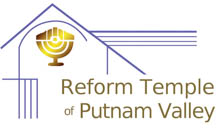Robert’s Rules of Order
Simple Reminders
For more information about Roberts Rules of Order, including a free report from Robert McConnell Productions, please visit http://www.parli.com/
A full version can be found at http://www.constitution.org/rror/rror–00.htm
Points
The following three points are always in order:
- Point of Order: a question about process, or objection and suggestion of alternative process. May include a request for the facilitator to rule on process.
- Point of Information: a request for information on a specific question, either about process or about the content of a motion. This is not a way to get the floor to say something you think people should know. People misusing points of information in this fashion will be defenestrated, or otherwise sanctioned forcefully.
- Point of Personal Privilege: a comment addressing a personal need – a direct response to a comment defaming one’s character, a plea to open the windows, etc.
Motions
All motions must be seconded, and are adopted by a majority vote unless otherwise noted. All motions may be debated unless otherwise noted. Motions are in order of precedence: motions may be made only if no motion of equal or higher precedence is on the floor (i.e., don’t do a number 5 (move to end debate) when the body is discussing a number 4 (move to suspend rules).
- Motion to Adjourn: not debatable; goes to immediate majority vote.
- Motion to Recess: not debatable. May be for a specific time.
- Motion to Appeal the Facilitator’s Decision: Not debatable; goes to immediate vote. Allows the body to overrule a decision made by the chair.
- Motion to Suspend the Rules: suspends formal process for dealing with a specific question. Debatable; requires 2/3 vote.
- Motion to End Debate and Vote or Call the Question: applies only to the motion on the floor. Not debatable; requires 2/3 vote.
- Motion to Extend Debate: can be general, or for a specific time or number of speakers. Not debatable.
- Motion to Refer to Committee: applies only to the main motion. Refers question to a specific group with a specific time and charge.
- Motion to Divide the Question: breaks the motion on the floor into two parts, in manner suggested by mover.
- Motion to Amend: must be voted for by a majority to be considered and by a 2/3 to be passed. If amendment is accepted as “friendly” by the proposer of the amendment then many bodies will allow it to be accepted without a formal vote; this is a way of including a consensus-building process into procedure without endless debate over amendments to amendments. Strictly speaking, however, once the main motion is made it is the property of the body to amend.
- Main Motion: what it is you’re debating and amending.
Other Meeting Guidelines:
- When a topic is first introduced or a main motion is made, allow all questions for information purposes to be asked before opening to debate.
- Discourage the repetition of arguments. Attempt to call on people who have not yet spoken before those who have already spoken. Discourage dialogues that start up between two individuals in debate.
- If debate carries on too long, impose time limits on speakers.
- Discourage people from talking in initials. Spell them out.
